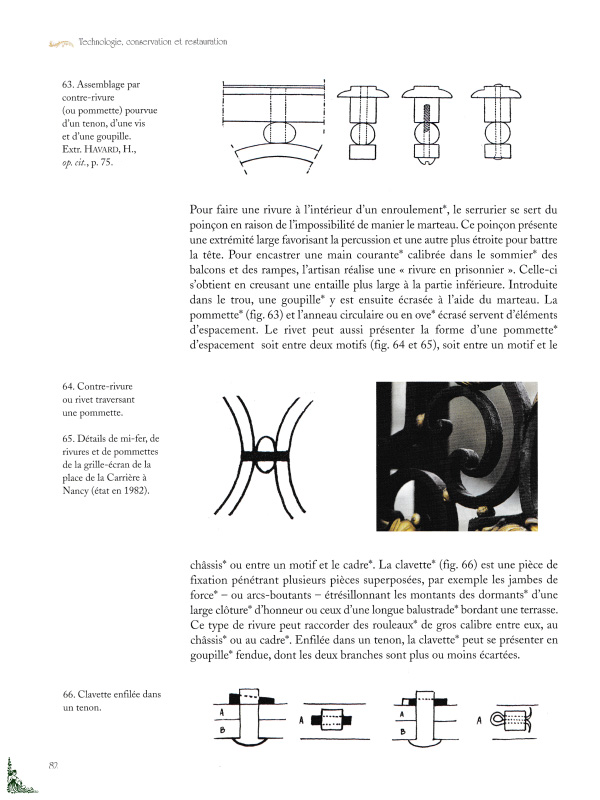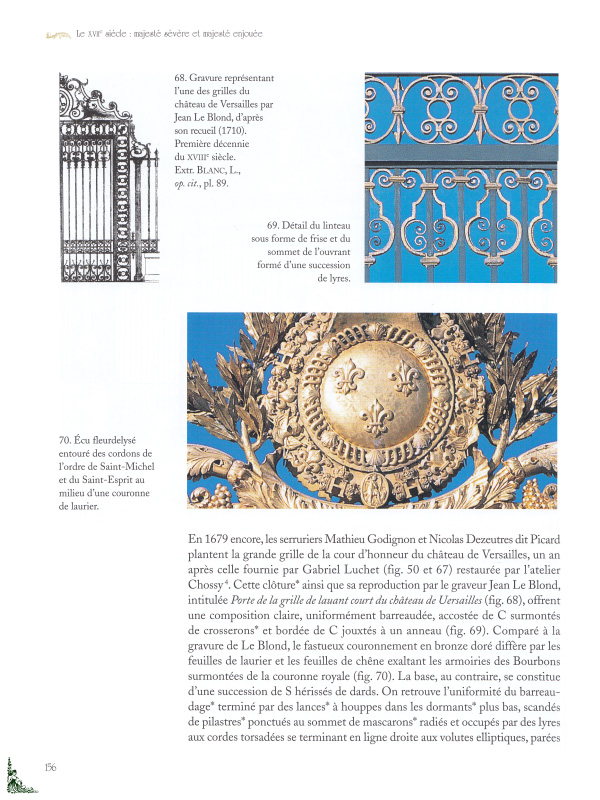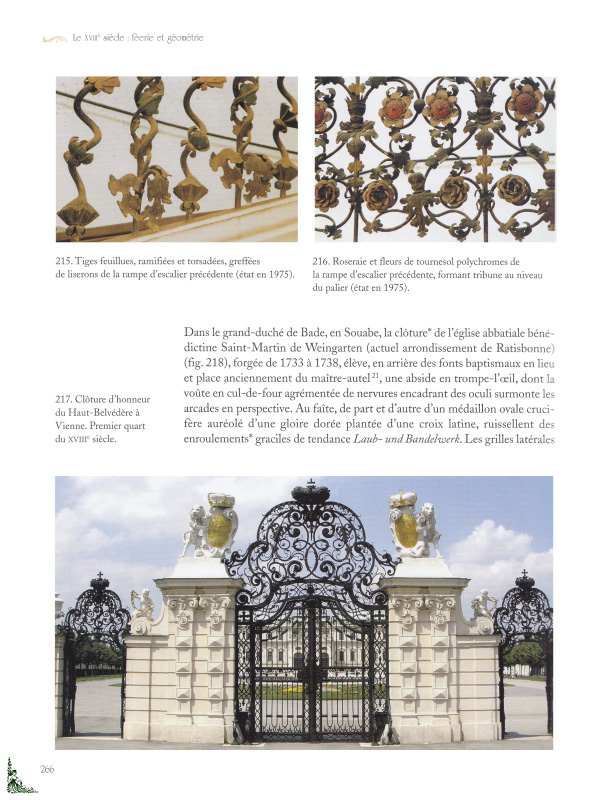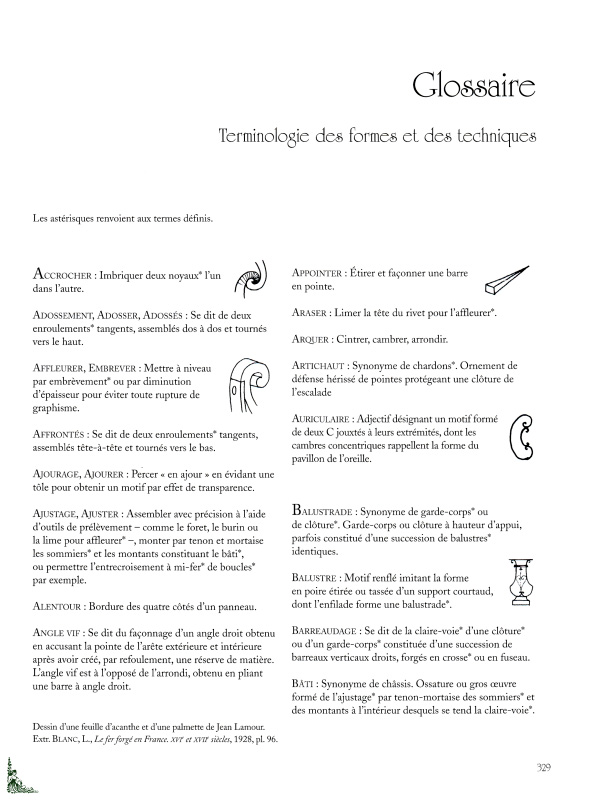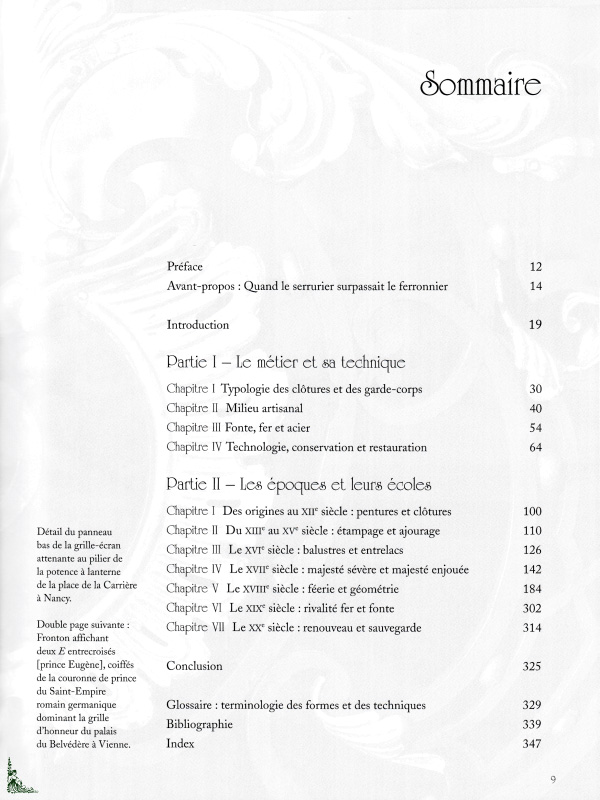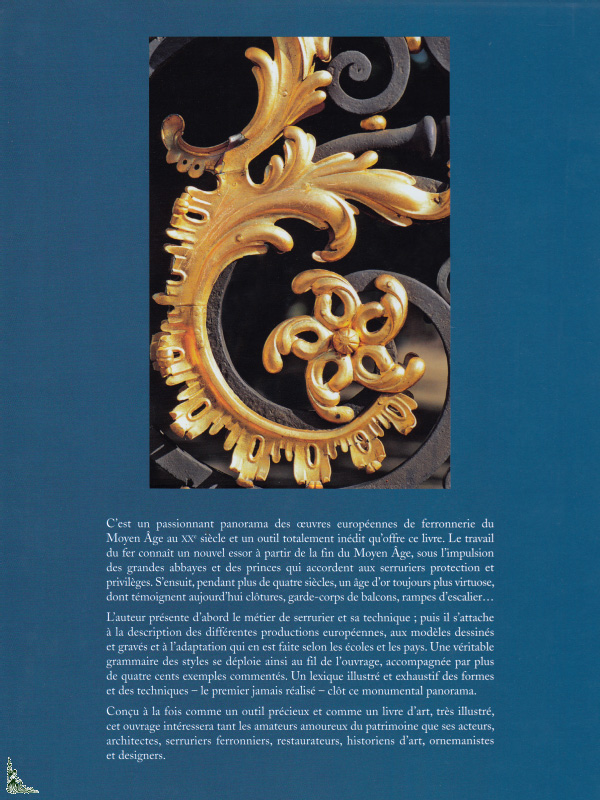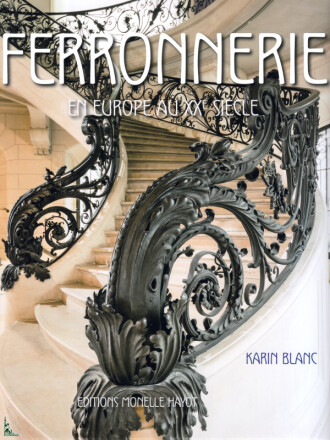Forged irons in European architecture
Contenido del libro
| Autor : | Bernard Wodon |
| Editor : | Faton (2018) |
| Encuadernación : | Hardcover (352 color pages) 8 inches x 11-½ inches |
| Lengua : | French |
| ISBN : | 978-2-87844-246-5 |
| EAN : | 9782878442465 |
Descripción
Forged irons in European architecture, by B. Wodon, Ed. Faton, 8 inches x 11-½ inches ( 21 cm x 29 cm ), hardcover book with 352 full color pages
This very complete book with 352 beautifully illustrated color pages is a fascinating panorama of European ironworks in European architecture from the Middle Ages to the 20th century.
The work of iron knows a new boom from the end of the Middle Ages, under the impetus of the great abbeys and princes who grant locksmiths protection and privileges. As a result, for more than four centuries, an ever more virtuous golden age, of which today witness fences, balcony railings, banisters...
The author first presents the profession of locksmith and his technique; then he focuses on the description of the different European productions, the models drawn and engraved and the adaptation that is made according to schools and countries. A true grammar of styles unfolds over the book, accompanied by more than four hundred commented examples.
An illustrated and exhaustive lexicon of forms and techniques - the first ever made - concludes this monumental panorama.
Designed both as a valuable tool and as an illustrated art book, this book will interest lovers of heritage that actors, architects, locksmiths, restorers, art historians, ornamentalists and designers.
Contents:
- Preface by Albert France-Lanord
- Foreword: When the locksmith surpassed the blacksmith
- Introduction
- Part I - The craft and the technique
- Typology of fences and railings
- Artisanal environment
- Cast iron and steel
- Technology, conservation and restoration
- Part II - Times and their schools
- From the origins to the 12th century: hinges and fences
- From the 13th to the 15th century: stamping and openwork
- The 16th century: balusters and tracery
- The 17th century: severe majesty and playful majesty
- The 18th century: Fairy and geometry
- The 19th century: iron and cast iron rivalry
- The 20th century: renewal and safeguarding
- Conclusions
- Glossary: terminology of forms and techniques
- Bibliography
- Index
The French texts are written by Bernard Wodon.
 Description française
Description française
Fers forgés dans l'architecture européenne
Détails du livre
| Auteur : | Bernard Wodon |
| Éditeur : | Faton (2018) |
| Reliure : | Relié (352 pages couleurs) 21 cm x 29 cm ( 8 inches x 11-½ inches ) |
| Langue(s) : | Français |
| ISBN : | 978-2-87844-246-5 |
| EAN : | 9782878442465 |
Description
Fers forgés dans l'architecture européenne, de B. Wodon, Ed. Faton, 21 cm x 29 cm, relié avec 352 pages couleurs
Cet ouvrage très complet avec 352 pages couleur superbement illustré est un passionnant panorama des oeuvres européennes de ferronnerie dans l'architecture européenne du Moyen-Âge au XXe siècle.
Le travail du fer connait un nouvel essor à partir de la fin du Moyen Âge, sous l'impulsion des grandes abbayes et des princes qui accordent aux serruriers protection et privilèges. S'ensuit, pendant plus de quatre siècles, un âge d'or toujours plus virtuose, dont témoignent aujourd'hui clôtures, garde-corps de balcons, rampes d'escalier...
L'auteur présente d'abord le métier de serrurier et sa technique ; puis il s'attache à la description des différentes productions européennes, aux modèles dessinés et gravés et à l'adaptation qui en est faite selon les écoles et les pays. Une véritable grammaire des styles se déploie ainsi au fil de l'ouvrage, accompagnée par plus de quatre cents exemples commentés.
Un lexique illustré et exhaustif des formes et des techniques - le premier jamais réalisé - clôt ce monumental panorama.
Conçu à la fois comme un outil précieux et comme un livre d'art, très illustré, cet ouvrage intéressera les amateurs amoureux du patrimoine que les acteurs, architectes, serruriers ferronniers, restaurateurs, historiens d'art, ornemanistes et designers.
Principaux chapitres de l'ouvrage :
- Préface de Albert France-Lanord
- Avant-propos : Quand le serrurier surpassait le ferronnier
- Introduction
- Partie I - Le métier et la technique
- Typologie des clôtures et des garde-corps
- Milieu artisanal
- Fonte, fer et acier
- Technologie, conservation et restauration
- Partie II - Les époques et leurs écoles
- Des origines au XIIe siècle : pentures et clôtures
- Du XIIIe au XVe siècle : étampage et ajourage
- Le XVIe siècle : balustres et entrelacs
- Le XVIIe siècle : majesté sévère et majesté enjouée
- Le XVIIIe siècle : Féerie et géométrie
- Le XIXe siècle : rivalité fer et fonte
- Le XXe siècle : renouveau et sauvegarde
- Conclusions
- Glossaire : terminologie des formes et des techniques
- Bibliographie
- Index
Les textes en Français sont de Bernard Wodon.




